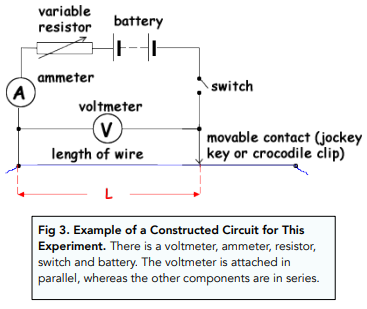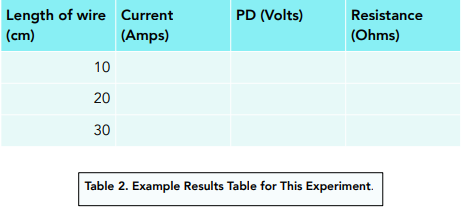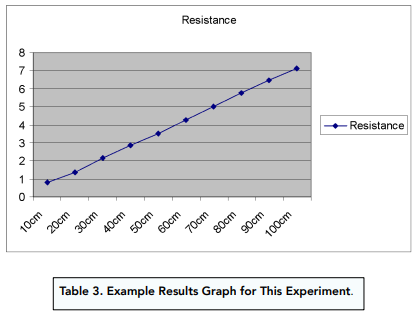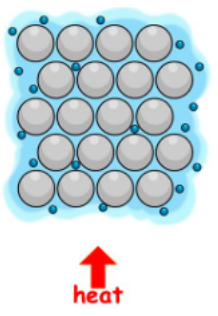Resistance (GCSE Physics)
Resistance
Resistance
Resistance in the circuit slows down the flow of charge (the current). For any given voltage, a higher resistance means a lower current.
You can have resistors as actual components in circuits, but wires, lamps, motors and other components all have some elements of resistance.
Resistance is measured in ohms (Ω).
We can measure resistance of a single component by looking at the current that flows through it (A) and the voltage applied across its ends (V). The higher the resistance, the lower the current for any given voltage.
Types of Resistors
Resistance in the circuit slows down the flow of charge (the current). For any given voltage, a higher resistance means a lower current. Resistance is measured in ohms (Ω).
There are two different types of resistors, which are both able to slow down the current in a circuit:
- Fixed resistors – fixed resistors have a constant value. Therefore, the resistance provided by a fixed resistor is constant.
- Variable resistors – variable resistors do not have a fixed value – they can change their value as the current changes.
Components in a circuit, such as lamps, will act as variable resistors. They are variable because their resistance will change depending on the current that flows through them.
Investigating the Resistance of Circuits
We can investigate the factors affecting resistance of circuits using the following method.
In this method, we will be varying the length of wire in this circuit.
Method
- Construct a circuit. Using an ammeter, voltmeter, switch and a variable resistor, set up the circuit shown below. Add a length of wire to the circuit, which should be movable as shown below.

- Place the length of wire on a metre ruler. We need to be able to measure out different lengths of the wire, so we should place it on a metre ruler. The wire should stay at a constant temperature throughout the experiment.
- Measure 10cm of wire. Using the ruler, measure out 10cm of the wire. Attach crocodile clips on either end of the 10cm, so it is part of the circuit. .
- Record the current and pd. After closing the switch and completing the circuit, you can measure the current through the wire using the ammeter and the pd across the wire using the voltmeter. Record the current in amps and the potential difference in volts.
- Calculate the resistance. Now that you have the current and potential difference, you can calculate the resistance. Do this by rearranging V = IR into R = V / I. Record the resistance in ohms.
- Change the length of wire. Once you have made the recordings for the 10cm length of wire, measure out a new section of wire. The new section should be 20cm. Repeat step 4.
- Repeat the experiment. Now, you need to repeat steps 3 – 6, but with a slight alteration. Every time you repeat the experiment you should increase the length of wire by 10 cm. Record your results in a table like this:


The Effect of Temperature on Resistance
As an electrical charge flows through a component, work is done against resistance. Some energy may be dissipated as thermal energy.
This means that if a current flows through a resistor, the resistor will heat up.
Electrons collide with ions in the lattice of the resistor. As the electrons bump into the ions, energy is transferred causing the ions to vibrate and heat up.

This means that as the resistor becomes hotter, more ions vibrate and it is more difficult for electrons to pass through. This explains why the current decreases as a resistor heats up, for a given potential difference.
Unwanted energy transfer as current flows between components, can be reduced using low resistance wires.
Length and Diameter of a Wire
The resistance of a wire is affected by the:
- Length of the wire
- Thickness of the wire
Length
If a metal wire is longer, electrons from an electric current with collide with more ions from the metal, as they flow through the wire. The increased collisions make it harder for current to flow through, meaning the resistance will increase.

The length is directly proportional to the resistance of a wire.

Where:
- resistance, R, in ohms, Ω
- length, l, in metres, m
Diameter
If a wire is thicker, it will have a larger diameter. This means there is more space for electrons to travel through and carry a current. Therefore the resistance will decrease.

The cross-sectional area is inversely proportional to the resistance of a wire.

Where:
- resistance, R, in ohms, Ω
- cross-sectional area, A, in metres squared, m²
Resistance in physics refers to the opposition to the flow of electric current in a material or circuit. It is caused by the collisions of electrons with the ions in the material and can lead to a reduction in the flow of electric current.
The resistance of a material can be affected by several factors, including its temperature, length, cross-sectional area, and material type. Increasing the temperature of a material can increase its resistance, while increasing the length of a material can also increase its resistance.
Ohm’s law states that the current flowing through a conductor between two points is directly proportional to the voltage across the two points and inversely proportional to the resistance between them. This relationship can be represented by the equation V = IR, where V is the voltage, I is the current, and R is the resistance.
A resistor is a passive electronic component that is used to reduce the flow of electric current in a circuit by providing resistance. They come in various shapes, sizes, and resistance values, and are used to control the amount of current in a circuit.
A potential difference, also known as voltage, is a measure of the energy per unit charge that is required to move an electric charge from one point to another. It is the driving force behind the flow of electric current in a circuit.
An electric circuit is a closed loop of conductors through which electric current can flow. It typically consists of a source of electric energy, such as a battery, and various components, such as resistors, switches, and light bulbs, connected in a specific manner.
A series circuit is a type of electrical circuit in which the components are connected in a single loop, so the current flows through each component in turn. In a series circuit, the total resistance is equal to the sum of the individual resistances.
A parallel circuit is a type of electrical circuit in which the components are connected so that each component has its own separate path for electric current to flow. In a parallel circuit, the total resistance is less than the smallest individual resistance.





Still got a question? Leave a comment
Leave a comment